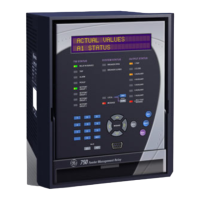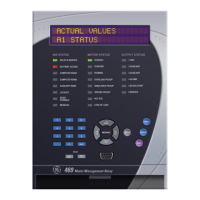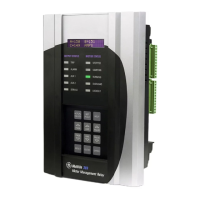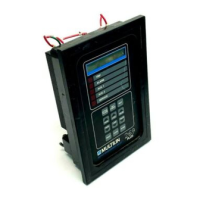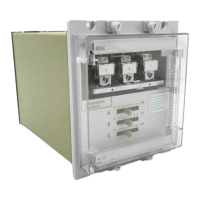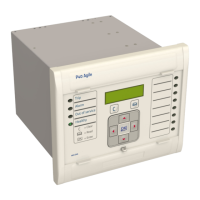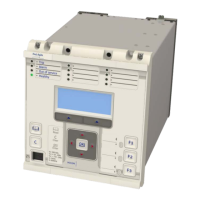General
Commissioning
745
Transformer Management Relay
http://www.GEindustrial.com/multilin
7–1
GE Multilin
7 Commissioning
General
Introduction The procedures contained in this section can be used to verify the correct operation
of the 745 Transformer Management Relay prior to placing it into service for the first
time. These procedures may also be used to verify the relay on a periodic basis.
Although not a total functional verification, the tests in this chapter verify the major
operating points of all features of the relays. Before commissioning the relay, users
should read Chapter 3: Installation, which provides important information about
wiring, mounting, and safety concerns. The user should also become familiar with
the relay as described in Chapter 2: Overview and Chapter 5: Setpoints.
Test personnel must be familiar with general relay testing practices and safety
precautions to avoid personal injuries or equipment damage.
This chapter is divided into several sections, as follows:
• GENERAL: outlines safety precautions, conventions used in the test
procedures.
• TEST EQUIPMENT: the test equipment required.
• GENERAL PRELIMINARY WORK
• LOGIC INPUTS AND OUTPUT RELAYS: tests all digital and analog inputs, the
A/D data acquisition system, and relay and transistor outputs.
• DISPLAY, METERING, COMMUNICATIONS, ANALOG OUTPUTS: tests all
values derived from the AC current and voltage inputs.
• PROTECTION SCHEMES: tests all features that can cause a trip, including
differential, overcurrent, over and underfrequency elements.
• AUXILIARY PROTECTION/MONITORING FUNCTIONS
• PLACING RELAY INTO SERVICE
• SETPOINT TABLES
Testing Philosophy The 745 is realized with digital hardware and software algorithms, using extensive
internal monitoring. Consequently, it is expected that, if the input circuits, CTs, VTs,
power supply, auxiliary signals, etc., are functioning correctly, all the protection and
monitoring features inside the relay will also perform correctly, as per applied
settings. It is therefore only necessary to perform a calibration of the input circuits
and cursory verification of the protection and monitoring features to ensure that a
fully-functional relay is placed into service.
